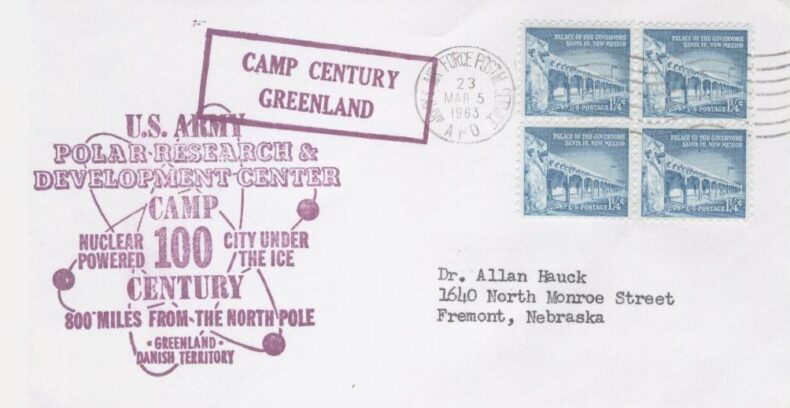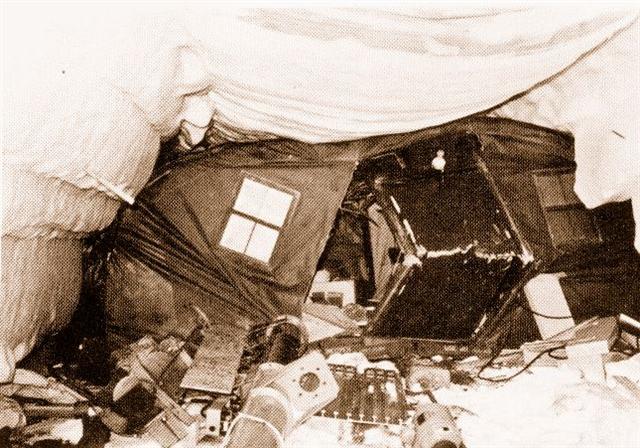
For near-term sea level rise, all eyes are on the Greenland Ice Sheet. Covering the vast majority of the island, the largest body of ice outside of Antarctica is responsible for one-fifth of the oceans’ current elevation gain and projected to add another 10 inches globally, whether we decarbonize or not. Much of our data now comes from satellites, but the earliest ice core samples there—drilling 4550 feet into more than 100,000 years of climate history—come from an elaborate ruse that began in 1959.
“As part of man’s efforts to probe deeper and deeper into the secrets of the universe,” a small party of army engineers selected a site that year for a “city under the ice.” This according to R&D PR film number 6 produced by the US War Office in 1963. It was all about “man’s never-ceasing quest for knowledge.”
Camp Century was built for a population of 200 men and, according to the propaganda film, a plucky young Eskimo sled dog named Mukluk (“strictly against regulation”). It was 800 miles from the North Pole and 150 miles east of Thule Air Base, which supplied it.
Having dug 23 trenches totalling two miles, the engineers covered the tunnels with overlapping corrugated steel arches and snow, then began assembling prefab buildings inside. There was a 10-bed infirmary, a theatre, labs, hobby shops, a chapel and a barber shop. There was a library, a post exchange, a rec hall and an operating room.
It all came at a cost of $8 million in mid-20th century dollars, most of which was the cost of the nuclear reactor they decided to drag up and install as their power system. Camp Century’s PM-2A nuclear reactor was the first of the short-lived US Army Nuclear Power Program’s reactors to produce power, and it was based on naval reactor designs, producing two megawatts. At that time, it was the most valuable cargo ever shipped out of the port of Buffalo.
Scientists then replaced the construction workers and got down to business. In 1960, two Danish boy scouts were selected to serve as ‘Junior Scientific Aides’ and spent five months assisting in the work. One of them even went on to become a geophysicist. The data taken during Camp Century’s seven-year occupation showed that the area had been ice free as early as 400,000 years ago, and its core samples have been revisited in recent years for climate change research.
Still, those of you with experience of High Arctic research stations will note that the whole thing seems a little like overkill. Not least because the Greenland Ice Sheet is in constant motion, spreading outward from its center, so the tunnels required more than a thousand tons of snow and ice removal every year just to keep from closing up. And, indeed, declassified records showed in 1996 that the city under the ice was a pilot for something called Project Iceworm.
The worm in question was a network of tunnels under the Greenland Ice Sheet that would house ‘Iceman’ ICBMs and their launch sites. The thinking was that not only was Greenland close to the USSR, but it would likely survive a first strike. The unanticipated shifting of glacial ice put the kibosh on those plans, and it’s a good thing, too, based on what the declassified records show:
Nobody told the Danes.

Fun historical study of Camp Century – https://www.sciencedirect.com/science/article/abs/pii/S0305748811001071
Oh I love it! “Strategic cooperation” with the island geography. Thanks Dan!